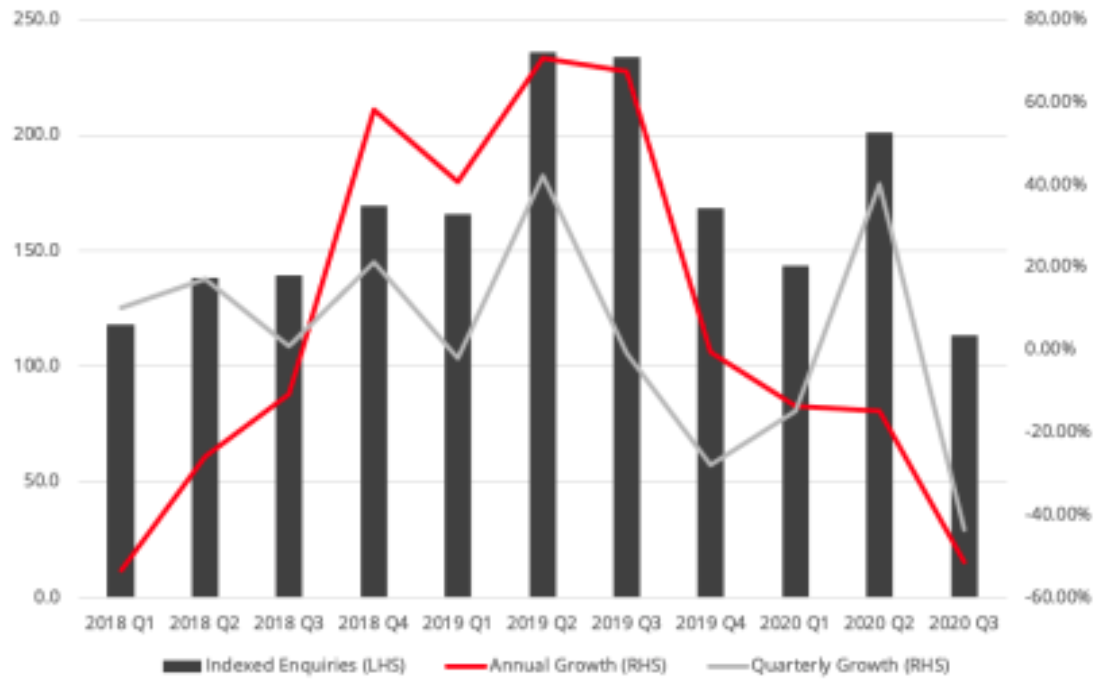Student Numbers to Bolster Property Market Post-Covid
International student numbers in Australia are set to eclipse their 2019 peak once borders reopen.
According to Asian real estate advertising and sales platform Juwai IQI, international student enrolments at Australian universities are expected to spike over the coming years as students look to upskill in order to remain competitive in the shrinking labour market.
“It will be pain before gain,” Juwai IQI executive chairman Georg Chmiel said.
“Chinese buyer enquiries are down to just half the level of a year ago and these numbers parallel to drop in student visas.
“There is still great demand—and 135,000 students are enrolled and ‘working from home’ overseas, and could quickly return to Australia as soon as borders open.”
Juwai IQI—formed by the merger of online advertising business Juwai and property sales specialist IQI last year—said prior to the pandemic, international students made up more than 30 per cent of residents in a number of suburbs neighbouring universities around Australia.
Chinese real estate buying index enquiries: Australia

^ Source: Juwai IQI, Mitchell Institute.
Leading into the academic year, purpose-built student accommodation (PBSA) operators were reporting near-record occupancies for 2020 academic year.
As of October, New South Wales has lost 79,719 international students, with the suburb of Waterloo most affected, with vacancy rates there have increased by 3.10 per cent over the past year.
Sydney’s CBD, Haymarket and The Rocks area have lost the second-highest number of students and had the biggest vacancy increase of 8.5 per cent.
Victoria has lost 66,855 international students throughout the pandemic, the bulk of which were based in the Melbourne CBD.
In Malvern East, vacancy rates are 70 per cent higher than a year ago, while vacancy rates in Docklands and Southbank have lifted 14.2 per cent and 12.7 per cent respectively compared to a year ealier.
Queensland has lost 37,333 international students, a third of its total international student cohort compared to a year earlier.
The number of international students studying at Australian universities has increased dramatically in the past two decades.
International student contributions extend beyond fees: in 2018, $32 billion was injected into to the Australian economy, with upwards of 60 per cent of that figure spent on goods and services across the wider economy.
Approximately $11 billion was directly from the 160,000 students from China who studied in Australia that year.

While competitor countries continue to face their own struggles with the pandemic, Australia is now well-placed to benefit from its strict approach to controlling the spread of Covid-19.
“Our clients across Asia tell us that they would feel safer travelling to Australia to study in 2021 and 2022 than the United States or the United Kingdom,” Chmiel said.
“By 2025, Australia is likely to increase its share of international students and particularly of Chinese students at the expense of the US, the UK, and Canada.”
Currently, Chinese students account for 62 per cent of international students who are enrolled, but cannot enter the country.
More than 100,000 international students are estimated to be stranded in China, unable to return to their studies.
“Investors who already own property and are suffering may want to hang in there for another six or 12 months,” Chmiel said.
“Student numbers will begin climbing again, rents will go back up, and investments will regain lost value.
“[For] those looking to take advantage of this dip in the market, then the best opportunity is most likely to purchase in the hardest-hit suburbs from an owner who can no longer afford to carry the property with the lower prevailing rents.”















